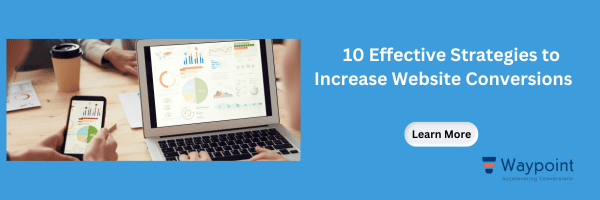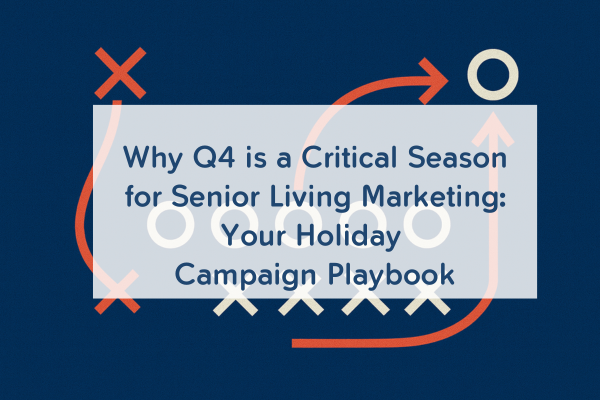With the rising aging population, the competition to offer the most compelling, tailored experiences to seniors is more intense than ever. The key to success in this bustling market lies in having a deep understanding of the senior living landscape and creating marketing strategies that connect with this audience’s preferences and unique needs.
Data is the secret sauce here. It is the fundamental element upon which intelligent marketing strategies are built. From insights into the operational side of senior living marketing to surveys, questionnaires, social media analytics, and website performance metrics, data is a treasure trove of insights that can steer us toward smarter, more effective decision-making.
Understanding Senior Living Marketing
Senior living marketing is about strategically promoting services and facilities designed to meet the unique needs of older adults, typically aged 65 and above. They offer various levels of care and independence, from independent living to assisted living and memory care. The primary audience for these communities includes seniors themselves, as well as their families and caregivers.
The primary goal of senior living marketing is to connect with this particular group effectively. But it’s not always a walk in the park. This field comes with its own set of challenges and competition, given the growing demand for senior living options.
That’s where data-driven decision-making becomes our trusty sidekick. It helps us navigate this specialized marketing arena, enabling us to tailor our strategies and provide top-notch services to our target audience.
Unique Challenges in Senior Living Marketing
Marketing senior living communities present a unique set of challenges. To begin with, the competition is fierce. With an aging population and the rising demand for these services, numerous senior living communities are vying for the same potential senior citizens. This saturation in the market makes it essential to stand out.
Marketing in the senior living sector often involves addressing sensitive topics such as aging, health, and end-of-life care. These subjects require a delicate touch and a deep understanding of the emotional and practical concerns of both senior citizens and their families.
Benefits of Data-Driven Decision-Making
Data-driven decision-making offers numerous advantages that can be game-changers for your senior living marketing efforts:
Improved Audience Targeting
Data-driven decision-making empowers senior living communities to target their marketing efforts precisely. By analyzing data, you can gain insights into the preferences, needs, and pain points of your target audience. This information enables you to tailor your messages and services to the right individuals and families, increasing the effectiveness of your marketing campaigns.
For instance, if data analysis reveals that a significant portion of your target audience values easy access to healthcare services, you can create targeted content and advertisements highlighting your community’s healthcare offerings, thus attracting the right prospects.
Personalization
Personalization is a crucial component of effective marketing, and data-driven decision-making takes personalization to the next level. With the help of data, senior living communities can create personalized experiences for their audience. Personalization fosters a sense of connection and engagement, as individuals feel that you genuinely understand and care about their unique needs and preferences.
For instance, data can reveal that some senior citizens are strongly interested in gardening activities, while others prefer cultural events. By customizing activity schedules and communications to cater to these specific interests, you enhance satisfaction and engagement, leading to more positive testimonials and referrals.
Cost Efficiency and ROI Enhancement
Making informed decisions based on data is not only beneficial for senior citizens but also for your budget. Data-driven marketing allows you to allocate resources where they will have the most impact, leading to cost efficiency and enhanced return on investment (ROI).
Instead of investing in broad and generic marketing campaigns that may not yield the desired results, you can allocate your resources strategically.
For example, suppose data analysis reveals that social media advertising generates higher engagement among your target audience than print advertisements. In that case, you can reallocate funds to digital marketing, ensuring you get the most out of your marketing budget.
Enhanced Decision-Making
Data provides a solid foundation for decision-making. It reduces the reliance on gut feelings and intuition, making marketing strategies more strategic and less speculative. Data-driven decision-making allows senior living communities to base their marketing strategies on concrete evidence rather than assumptions.
For instance, when deciding to launch a new service or activity, data analysis can provide insights into the potential demand, helping you make well-informed decisions that are more likely to be successful.
Competitive Edge
In a highly competitive senior living market, staying ahead of the curve is essential. Data-driven insights can provide your senior living community with a distinct competitive edge. By consistently using data to refine your services and marketing strategies, you can differentiate your community from others in your area.
For example, by continually improving and customizing the services based on feedback and market trends, you can establish a reputation for providing the highest quality of care and services, making your community more appealing to prospective senior citizens and their families.
Organic Data Sources in Senior Living Communities
Organic data sources in senior living communities arise naturally from interactions and experiences. These sources include:
- Surveys: Surveys are structured questionnaires that senior citizens and their families can complete to provide feedback on various aspects of their experiences, from the quality of care to the facilities and amenities.
- Feedback and Reviews: Open-ended feedback, reviews, and testimonials offer unfiltered insights into the experiences and satisfaction levels of senior citizens and their families. They often provide a more personal and emotional perspective.
- Behavioral Data: This includes data on activities, preferences, and interactions within the community. Behavioral data can reveal patterns and trends that inform marketing decisions.
- Community Engagement: The level of participation and engagement within the community is a valuable organic data source. It reflects the satisfaction and sense of belonging among senior citizens.
Significance of Organic Data Sources
Organic data sources hold a special place in the realm of data-driven marketing. Their authenticity and relevance are unparalleled. The feedback collected through surveys, reviews, and testimonials reflects the actual experiences and opinions of those living in senior communities. This genuine and unfiltered input is priceless for shaping marketing strategies.

Collecting and Analyzing Data
But how do you go about gathering and making sense of this precious organic data? Let’s break it down:
Data Collection
The process of collecting data from senior citizens and their families involves creating surveys and feedback mechanisms that are easy to access and complete. Encouraging open and honest feedback is crucial. Interviews and focus groups can also be valuable tools for obtaining qualitative insights.
Data Analysis
Once you’ve collected the data, the next step is to analyze it. Tools like sentiment analysis can help uncover insights from the feedback. Sentiment analysis evaluates the emotional tone of written feedback, helping you understand the senior citizens’ and families’ feelings and experiences.
Data Privacy and Ethics
It’s essential to maintain the privacy and ethical treatment of data throughout the entire process. This not only protects the rights of your senior citizens but also builds trust within the community.
Implementing Data-Driven Marketing Strategies
Now that you have collected and analyzed your organic data, it’s time to put these insights to work in your marketing strategies. Here’s how:
- Tailored Content: Use the insights gained from organic data to tailor your content to match the preferences and needs of your audience. Create blog posts, brochures, and videos that address the topics and concerns that matter most to your community.
- Personalized Outreach: Create personalized outreach campaigns based on behavioral data and feedback. Send personalized emails and messages to senior citizens and families, showcasing your understanding of their needs.
- Community Stories: Highlight the real stories and experiences of your senior citizens in your marketing materials. Use testimonials and quotes from senior citizens and families to add authenticity and emotional appeal to your message.
Final Thoughts
In a world where data is king, don’t be left behind. By using data to connect with your audience on a personal level and provide services that truly meet their needs, you can create a thriving and satisfied senior living community.
Data-driven decision-making is not just a buzzword; it’s the way forward for senior living marketing. The advantages are clear, the sources are authentic, and the process is manageable. By embracing data-driven strategies, senior living communities can better understand and serve their senior citizens and families.







